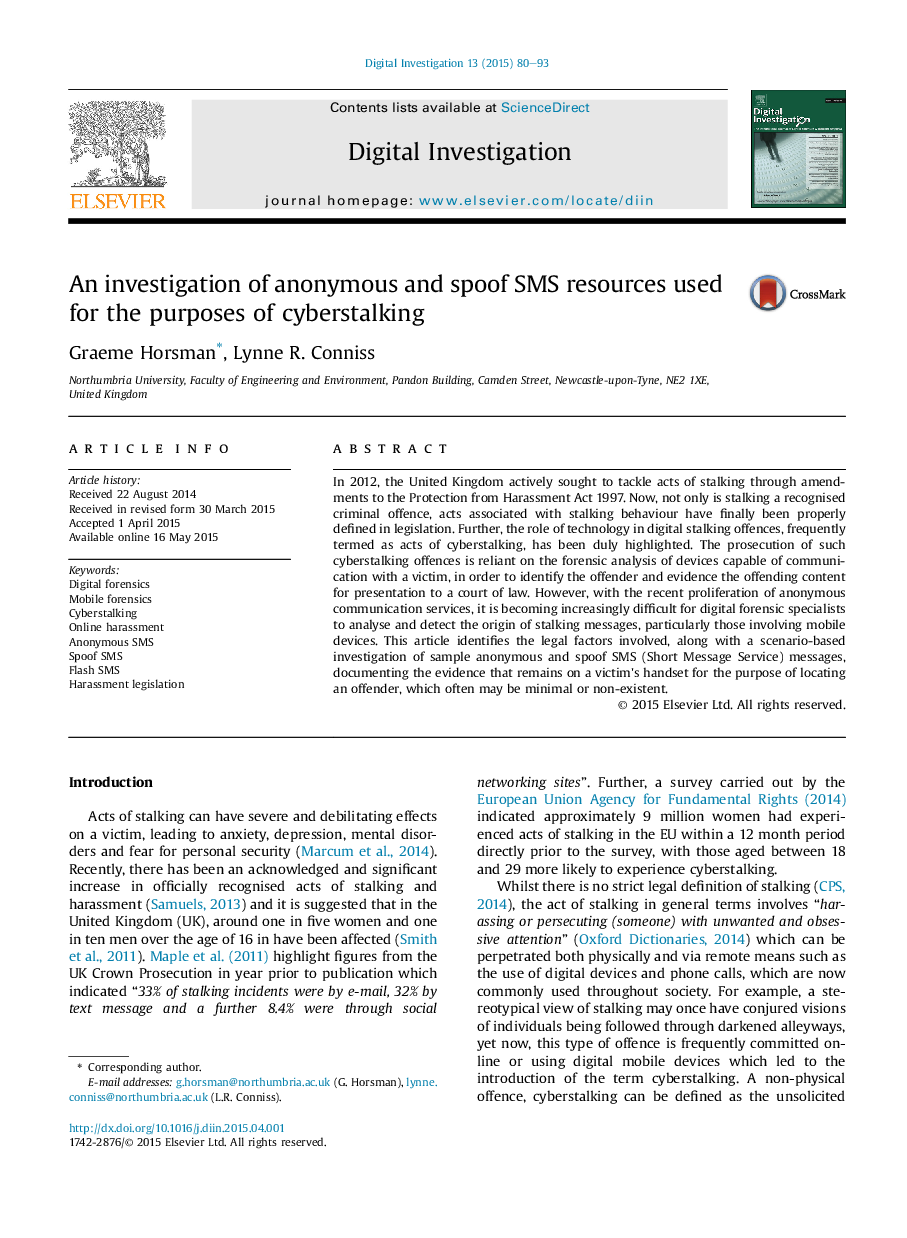| Article ID | Journal | Published Year | Pages | File Type |
|---|---|---|---|---|
| 456304 | Digital Investigation | 2015 | 14 Pages |
In 2012, the United Kingdom actively sought to tackle acts of stalking through amendments to the Protection from Harassment Act 1997. Now, not only is stalking a recognised criminal offence, acts associated with stalking behaviour have finally been properly defined in legislation. Further, the role of technology in digital stalking offences, frequently termed as acts of cyberstalking, has been duly highlighted. The prosecution of such cyberstalking offences is reliant on the forensic analysis of devices capable of communication with a victim, in order to identify the offender and evidence the offending content for presentation to a court of law. However, with the recent proliferation of anonymous communication services, it is becoming increasingly difficult for digital forensic specialists to analyse and detect the origin of stalking messages, particularly those involving mobile devices. This article identifies the legal factors involved, along with a scenario-based investigation of sample anonymous and spoof SMS (Short Message Service) messages, documenting the evidence that remains on a victim's handset for the purpose of locating an offender, which often may be minimal or non-existent.
